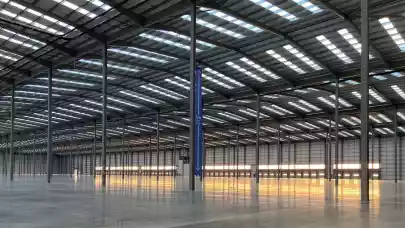
Romania’s industrial and logistics market expanded by over 500,000 sqm during 2022, with around half of all deliveries based in the Bucharest region, according to a report by real estate consultancy Colliers.
The total industrial stock reached almost 6.2 million sqm last year and the market still has room for growth compared to other countries in CEE.
Furthermore, schemes involving multimodal transportation are gathering steam, while more flexible arrangements aimed at SMEs or those seeking smaller surfaces are also becoming a more frequent occurrence.
The total leasing activity reached around 830,000 sqm last year compared to 675,000 sqm during 2021. Bucharest dipped further in terms of overall leasing share, at around 48% of total versus around 63% in the previous year. Colliers’ consultants suggest this is mostly the result of some sizable deals outside the capital, but also the fact that newer/less established submarkets are rising.
“While the average deal size was more or less unchanged versus the previous year, at below 7,000 sqm, some quite sizable leasing transactions were closed. The year’s biggest was related to the new H&M distribution center in Ploiesti, to be developed by CTP, over a surface of around 88,000 sqm. This is one of the rare instances when a deal is around the 100,000 sqm level, but is a progress compared to 3 or 4 years ago, when no such sizable transactions were present. Furthermore, several other deals with more than 50,000 sqm were closed last year, with more such big deals currently being negotiated,” said Victor Coșconel, Head of Office & Industrial Agencies at Colliers.
Vacancy rates have remained in single-digit territory, while rents have reached around €4.5 per sqm in Bucharest, while the average across the country was €4.3 per sqm.
Going forward, the agency points out that Romania has the capacity to reach 10 million sqm of industrial and logistics spaces by 2030 over growing consumption of Romanians and companies’ demand for efficient warehousing assets.



